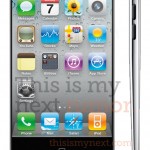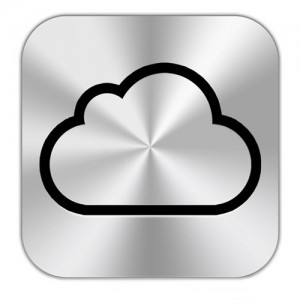Apple announced the new iPhone today and just as I speculated, it is not a brand new phone, but an upgrade to the iPhone 4. Naturally as they did with the original 3G upgrade, Apple appended a little ‘S’ to signify the difference between devices. This ‘S’ is presumed to mean speed with the iPhone 4S being truly faster than the original iPhone 4. Among the change in processor, Apple has also increased the camera’s megapixels to 8 and upped video recording to 1080p. Lastly, the new iPhone 4S is now a dual-band world phone with two antennas. This made it possible for Apple to have one device that works on all networks.
From a sales point of view, a few things have also changed:
- There is one device for all carriers. No more GSM and CDMA phones being different.
- The original iPhone 4 now has a lower-priced 8GB model.
- The new iPhone 4S now has a 64GB model.
- The white model will be available at launch. 😉
Comparison Chart
| iPhone 4 | iPhone 4S | |
|---|---|---|
| Dimensions | 4.5 inches tall by 2.3 inches wide by 0.37 inch thick; 4.8 ounces | 4.5 inches tall by 2.3 inches wide by 0.37 inch thick; 4.9 ounces |
| Display | 3.5-inch, 960×640-pixel Retina display | 3.5-inch, 960×640-pixel Retina display |
| Camera | 5-megapixel camera with LED flash, 720p HD video recording at 30fps; front-facing VGA camera | 8-megapixel camera with LED flash, 1080p HD video recording at 30fps, auto focus, face detection; front-facing VGA camera |
| Connectivity | Bluetooth 2.1; Wi-Fi (802.11b/g/n); GSM/UMTS/HSDPA/HSUPA; CDMA/EV-DO Rev. A | Bluetooth 4.0; Wi-Fi (802.11b/g/n); dual-band world phone; GSM/UMTS/HSDPA/HSUPA; HSPA+; CDMA/EV-DO Rev. A |
| Processor | 1GHz ARM Cortex-A8 | Dual-core 1GHz A5 processor with dual-core graphics |
| Capacity | 8GB, 16GB, 32GB | 16GB, 32GB, 64GB |
| Location | Assisted GPS, digital compass, Wi-Fi, cellular | Assisted GPS, digital compass, Wi-Fi, cellular |
| Sensors | Three-axis gyro, accelerometer, proximity sensor, ambient light sensor | Three-axis gyro, accelerometer, proximity sensor, ambient light sensor | Battery life | 7 hours of talk time on 3G, 12.5 days of standby time; 40 hours audio playback; 10 hours video playback; 6 hours (3G)/10 hours (Wi-Fi) Internet use | 8 hours of talk time over 3G, 14 hours over 2G, 40 hours audio playback, 10 hours video playback, 6 hours (3G)/9 hours (Wi-Fi) |
| Carrier | AT&T, Verizon | AT&T, Verizon, Sprint |
| Pricing | $99 for 8GB, $199.99 for 16GB, $299.99 for 32GB | $199 for 16GB, $299 for 32GB, $399 for 64GB |
| Colors | Black, white | Black, white |
Full iPhone 4S specs can be found at Apple.com
My two cents
Much like I went from the original iPhone to the 3GS (skipping the 3G), I plan to now go from iPhone 4 to the iPhone 6 which using my best guess will be out next summer. This naming convention will surely cause some confusion among the consumers, but remember that the iPhone 4S is in fact the 5th version of the iPhone making whatever comes next, the 6th. Waiting this out will serve two purposes: 1. Microsoft will have more time to sell me on how much greater Windows Phone 7 is to iOS 5 and AT&T will not have me locked into any contracts, thus allowing me to jump ship if I feel the need to in order to get the next phone on Sprint or Verizon.
All-in-all, if you’re a current iPhone 4 user, there isn’t much of a need to upgrade unless you’re seriously concerned about speed. If you’re a 3GS user or you’ve never owned iPhone, now’s your chance to finally get one at a great price. You can still get the iPhone 4 starting at $99 for the new 8GB model. But keep one thing in mind if you’re buying an iPhone 4S: you could potentially kill your ability to get a subsidized upgrade in the summer if iPhone 6 comes out and you’ll be stuck with a new 2-year contract.
As for me, I’m staying away from this phone and I might stay with Windows Phone 7 if I like the new 7.5 Mango upgrade. If not, I’ll probably just find a cheap iPhone 3GS or 4 on eBay and use it until the next device comes out. To all those who will be waiting in line on October 14th, good luck!

